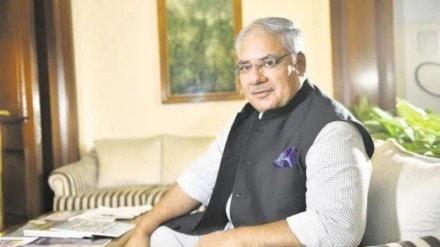There are good reasons why S Sivakumar, who heads the Agri and IT Businesses at ITC, describes the budget as “comprehensive with a structured focus.” In particular, he welcomes the emphasis on agricultural productivity, digital infrastructure, production of vegetables near consumption centres and on natural farming. “From an agri perspective, the budget has been fairly comprehensive with focus on climate change, which is the biggest challenge and in taking an innovative approach through the challenge mode for funding research to deal with some of the climate change issues.” He describes many of the measures taken in the budget as demand-responsive and therefore welcome since these “typically tend to be more productive,” he says.
Finance minister Nirmala Sitharaman, in her speech referred to the government’s intent “to undertake a comprehensive review of the agriculture research setup to bring the focus on raising productivity and developing climate resilient varieties.” She then goes into specifics starting with funding for research in agriculture to be provided in a challenge mode.”
“The challenge fund is an innovative attempt rather than allocating a few hundred crore more to research. Much of the accelerated research happens globally on a challenge mode,” he says. Sivakumar sees the deepening of digital public infrastructure as another highlight of the budget. Now, with a farmer registry, a land registry and a crop registry forming the underlying stack.
Sitharaman in her speech says, the government, in partnership with the states, is to facilitate the implementation of the Digital Public Infrastructure (DPI) in agriculture for coverage of farmers and their lands in 3 years. During this year, digital crop survey for Kharif using the DPI is to be taken up in 400 districts.
To Sivakumar, the emphasis on producing vegetables near consumption centres is finally getting to a longawaited move towards cluster-based approach. While, the measure would again be a demand-responsive, it will also offer a solution to the challenge of high perishability faced by vegetables. Focus on crop diversification is another area that to Sivakumar needs special mention. In her speech, the finance minister refers to a move towards “achieving self-sufficiency in pulses and oilseeds” and for that “strengthening their production, storage and marketing.” As announced in the interim budget, she says, “a strategy is being put in place to achieve ‘atmanirbharta’ for oil seeds such as mustard, groundnut, sesame, soybean, and sunflower.”
On encouraging natural farming, another area that the budget focusses on, Sivakumar, who oversees ITC’s sustainability initiatives and social investment programmes, describes natural farming as “a very India unique way of both reducing cost of cultivation, reducing emissions and over a period of time, raising productivity on a more sustainable basis that is also more healthy too with the absence of all chemicals and pesticides.” In the next two years, one crore farmers across the country are to be initiated into natural farming supported by certification and branding. It is an area where incidentally, Andhra Pradesh has taken a lead thus far.
To Sivakumar, often referred to as the architect of ITC’s famed e-Choupal model of farmer empowerment, sums up the budget as an “extremely positive with a wide range of issues touched upon and a focus on nine priority areas.” From productivity and resilience in agriculture, social justice and empowerment, infrastructure and job creation, he finds clear well-segmented areas like for instance, the ELI (employment linked incentive). All of these, with attempts at innovative approaches.
